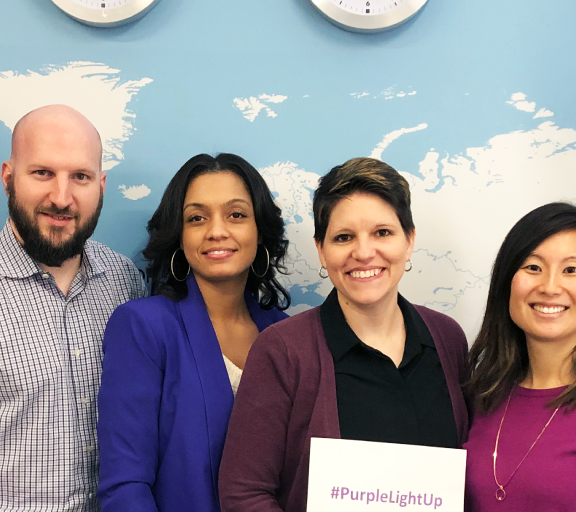Why Is an Inclusive and Diverse Workforce so Important?

Why is a diverse workforce so important? Here, we discuss this & why many companies are still struggling to embed this vital element of people management.
What is Inclusion and Diversity?
Inclusion and Diversity (I&D) [1] concerns the open inclusion and acceptance of different perspectives in the workplace and valuing an employee’s individuality. These perspectives may stem from age, gender, race, religion or disability and promoting these differences is an important aspect of effective people management. In the UK, legislation has set minimum standards of acceptance for workplace diversity, but to truly capitalise on the benefits that these differences can bring, companies must go beyond legal compliance and embed I&D into their strategy and workplace practices. Despite well-publicised benefits, companies are still struggling to successfully to do this and this article discusses the benefits as well as the factors limiting I&D in the workplace.
Why is a diverse workforce so important?
Fundamentally, there is a war for talent; competition is strong, demand continues to outstrip supply and being able to attract and retain talent from the widest pool possible is key to remain competitive. Allegis Group’s Emily Swanborough, Director of Professional Development and I&D committee leader says; “There is very clear research that demonstrates a direct correlation between growing companies and inclusive and diverse environments. Data shows that this isn’t just a nice to have, it’s an imperative.” According to The Telegraph, there has been notable business successes with technology giant Cisco attributing its ongoing technological innovation to its diverse leadership. Elsewhere, diversifying client teams is cited as the reason why management consultancy Ernst and Young has strengthened the quality of its client services and retention of senior team members.
Further supporting the business case for diversity are several additional benefits including:
- Competitive advantage – according to McKinsey, ethnically diverse companies are 35% more likely to financially outperform their industry peers.
- Improved attraction & company reputation – A recent study by PRnews cited diversity as an important factor for 86% of candidates when looking for a new job.
- A broader talent pool – Simple maths would suggest that hiring from a larger talent pool provides greater options for companies to identify top talent. In contrast, minimising the size of this pool at the hiring stage could risk missing out on the right candidate and narrowing the field of creativity, productivity and innovation that can come from diversity.
- Increased creativity productivity, & innovation – According to Josh Bersin research, inclusive companies are 1.7 times more likely to be innovation leaders in their market. With Harvard reporting that gender diverse firms are typically more productive.
- Better relationships with clients – I&D is now high on the agenda for most companies so being able to demonstrate diverse work practices and culture will better reflect the focus of other companies in the market, add depth to your client relationships and help you better serve their business needs.
- Bottom line profits – Alongside all of these benefits is perhaps the main one, which is the overall positive impact on the bottom line with, Forbes reporting in 2019 that companies with diverse leadership teams tend to produce 19% more revenue.
Limiting factors – Impairing true diversity at work
With so many employer benefits to I&D, what limits them from exploiting the full potential of the market every time they hire? While companies understand the theory and can read about the benefits, truly embodying diversity is still this causing real pain for talent leaders when it comes its practical application, and this is so for several reasons:
- Lack of diversity in leadership –In Fortune 500 companies, women and minorities hold 31% of board seats and overall nearly 80% of board members are male which can impact the perceived “glass ceiling” in employment and impair the progress of diversity at the most senior level.
- Accountability at leadership level – Given that the biggest decisions in any company are made at the top level, then it is important for leaders to be held to account in driving the right behaviours and messages down through the organisation and to lead by example. However, in the Allegis Group survey of 500 senior talent decision makers, only 4.6 percent of respondents worked for companies that linked executive compensation to inclusion and diversity objectives. There are notable exceptions in the likes of Microsoft, who announced in late 2016 that it would tie executive bonuses to diversity goals after reporting the second straight year of declines in female employees. In its 2019 report, just 3 years later, it reported a steady increases in the representation of women globally suggesting a link between accountability and progress in this field.
- Gender pay gap – With research positioning the gender pay gap at more than 20% and despite much negative press attention surrounding this, many companies are yet to achieve parity and more focus is required on eliminating the barriers and biases that lead to these discrepancies. While this gap exists, this will continue to impact the diversity we see in particular roles within companies.
- Unconscious bias – From the way companies acquire talent to the way people are treated once they join a company and everything in between, there are opportunities for bias to creep in. In our 2020 article on this topic we suggest ways that companies can tackle this bias, but by its very ‘unconscious’ nature this takes awareness and a conscious mindset shift.
Removing the barriers and the future of I&D at work
The business case for promoting an inclusive and diverse workplace is compelling and the pace of change in the market is not slowing down. In order to break down some of the barriers that limit companies from executing on their plans we suggest the following:
- Starting with I – Both referring to individuals and inclusion, once each person understands their role and an inclusive environment is fostered, a base for diversity to thrive is created.
- Getting serious about change – Once you have fostered inclusion, communicating a commitment to diversity is then key, but to turn commitment into action, and action into results involves not only a solid diversity position but objectives for change, metrics for success, and executive support that hold business leaders to account.
- Better understanding unconscious bias – In hiring and people management processes, consider how to limit bias by following the steps suggested in our recent article on this topic.
- Building diversity through talent acquisition –Reduce bias and improving diverse hiring can happen across all aspects of talent acquisition from job definitions to the sourcing and recruiting process, evaluation and selection and in the use of technologies.
- Enabling an inclusive employee experience – A positive employee experience is vital to attracting diverse talent. Leadership involvement, mentorship, training, employee resource groups, fairness in compensation, and opportunity for advancement are key ingredients to an inclusive company culture.
- Understanding the next Generation (Gen Z) – The next wave of talent to hit the workforce are already here so ensuring your company culture and best practices are open and inclusive is key not only to tap into this candidate pool but to realise the productivity benefits diverse thinking can bring.
- Thinking beyond gender – Much of the research on diversity focuses on gender but, new studies are bringing to light further areas of opportunity for employers who capitalise on the analytical minds and problem-solving skills of individuals with conditions like ADHD, Autism or Dyslexia. Neurodiverse groups may struggle with certain conventional interviews or tests but according to the World Economic forum, are a group that bring real value to the workplace due to their ability to problem solve, reason differently and come up with new ideas and overcome biases.
While the evidence for encouraging diversity at work is clear, improving the way companies identify, attract, and hire diverse workers does not happen automatically, it requires a conscious effort to reach out to a larger supply of quality candidates, remove the barriers to hiring, and ultimately create a more diverse employee population. But diversity is not just about recruiting. The way a company treats employees after hire also influences the views of job seekers and candidates. Do candidates see diverse employees rising in the organisation? Can all workers be their authentic selves and apply their unique perspectives? These are questions of inclusiveness — the “I” in the I&D equation and must be present before true diversity can be realised.
Leveraging our differences: Click here to learn more about Inclusion and Diversity at Allegis Group.
[1] Allegis Group have purposely chosen to call this strategy I&D as opposed to the more common D&I, based on the belief that Inclusion must come first in order for diversity to thrive.


